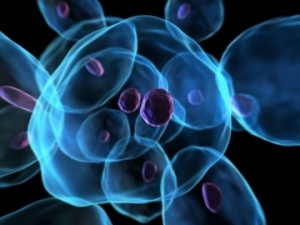How can differentiating cancerous cells help researchers come up with a better cure for certain cancers? To find out, we spoke to Dr Pierre Schembri-Wismayer, a man who has dedicated many years of his life to researching a revolutionary kind of cancer therapy.
 According to Dr Pierre Schembri Wismayer, there are two types of cancer in the world: the ones that are instigated from repeated exposure to toxins (‘Outside’ cancer), and the ones that develop randomly in both children and adults (‘Inside’ cancer), which include brain, blood and bone cancer.
According to Dr Pierre Schembri Wismayer, there are two types of cancer in the world: the ones that are instigated from repeated exposure to toxins (‘Outside’ cancer), and the ones that develop randomly in both children and adults (‘Inside’ cancer), which include brain, blood and bone cancer.
As a senior lecturer at the University of Malta’s Department of Anatomy, Faculty of Medicine and cheap mlb jerseys Surgery, Dr Pierre Schembri-Wismayer has spent years working on a cure for the latter; a cure that can differentiate immortal cancer stem cells from mortal cells.
“Although different cancers require different treatments, all the cures we have so far can be destructive as well as beneficial,” explains Dr Schembri Wismayer. “Excluding surgery, which is still invasive, chemotherapy and radiotherapy can be quite harmful to the body… In fact, people undergoing these therapies tend to lose their hair, feel sick, and contract more infections.
“Moreover, normal cells grow old and die naturally while most cancer cells are constantly in their adolescent phase, meaning that, as a person grows weaker from the disease, the cancer cells inside their body grow relatively stronger.”
Then, 20 years ago, research revealed that this process could be reversed in certain Sports cancers that afflict both adults and children. It was a groundbreaking theory, and one that has since been proven to be a valid candidate for cancer therapy.
“Differentiation Therapy is something I began researching when I was doing my PhD, and I’m still very involved in this. In fact, I’m currently on a two-year sabbatical so as to focus more on its workings,” Dr Schembri Wismayer tells us. “One of the ideas I’ve had with regards to this was to look at some of the world’s natural differentiating systems to see how cell behaviour there could help us differentiate cancer.”
Dr Schembri Wismayer knew that in certain animals, such as salamanders and starfish, when one of their limbs is cut off, the cells  around the wound start to regrow the missing arm or cheap mlb jerseys leg.
around the wound start to regrow the missing arm or cheap mlb jerseys leg.
“Thus effectively the reproducing the muscles, bone and skin that had been lost. This is differentiation, where stem
cells are becoming adult (or older) cells of various tissue types,” he says.“The signals that these stem cells received were ????? clearly instructing To them to become adult and fully differentiated tissues when needed – these animals don’t grow a spare leg all the time, just when they need to. And since cancer cells are like stem cells, in that they can do or be various things, then instructing them to grow old and die using these same signals didn’t seem so far fetched!”
The best part about Differentiation Therapy, however, isn’t the fact that it can cure cancers more easily than other treatments, but that it can do so without harming the healthy cells.
“For the first time, instead of injecting chemicals into a wholesale jerseys patient’s body and hoping that they will kill more cancer cells than healthy ones, we can now be sure that the cure will only kill cancer cells by forcing them to grow old, and die naturally,” he adds.
Although The this cure is not available cheap nfl jerseys yet for most cancers, it has come a long way in the past 20 years and it will, hopefully, offer patients of all ages – including children – a chance for survival against various kinds of ‘Inside’ cancer, including bone and brain cancer in the not too Friends distant future.
“‘Outside’ cancers are cancers that develop over time from repeated DNA damage from toxins cheap nba jerseys and are therefore almost never seen in children. These include skin, lung and colon cancers, and require a completely different treatment to the Differentiation Therapy,” explains Dr Schembri Wismayer. “In fact, here we focus our research on immunotherapy.”
The difference between those that can be treated using Differentiation Therapy and those that cannot, is that of one single random driving mutation being largely responsible for the cancer. In fact, it is this random gene defect that allows the research team to target cancer in children. Even so, medicine and research are advancing at an unprecedented rate. Acute promyelocytic leukemia (APL), which was 100 per cent incurable 20 years ago, is now 90 per cent curable! So there is a lot of hope in this sphere.
 Unsurprisingly, this research has gained a lot of interest from the public and NGOs, including the Alive Charity Foundation, who has specifically chosen research in Differentiation Therapy as one of the beneficiaries of this year’s cycle challenge.
Unsurprisingly, this research has gained a lot of interest from the public and NGOs, including the Alive Charity Foundation, who has specifically chosen research in Differentiation Therapy as one of the beneficiaries of this year’s cycle challenge.
“Alive’s donation will help us fund a PhD student to focus on childhood cancers of the brain, blood and bone, and to provide a new pair of able hands to the team,” says Dr Pierre.
“He or she will also be able to go on a short-term scientific mission through the European Consortium, StemChem, and gain invaluable knowledge and techniques that will be able to help us further our research in Differentiation Therapy, especially in brain tumour research, which is a relative new area for us,” Dr Pierre concludes.
If you would like to join the Alive Charity Foundation team to raise funds for research in aid of Children Cancer click here.
You can be part of this fascinating world of research by helping many other researchers achieve their breakthroughs in all the faculties of the University of Malta, including medicine, archaeology and technology. Please click here for more information on how to donate to research of this kind through the Research Trust (RIDT).
